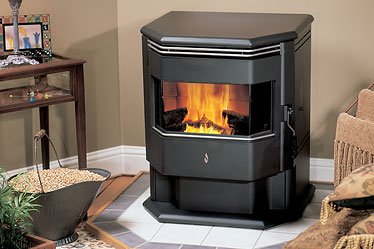
If you’ve ever cozied up next to a pellet stove on a frosty night, you know how much comfort these powerful heaters can bring. But like any hardworking appliance, pellet stoves need regular TLC to keep them purring efficiently. And here’s the thing: one wrong move during a repair can lead to costly headaches or even safety hazards down the line. Whether you’re a first-time pellet stove owner or a seasoned DIYer, recognizing common repair pitfalls will help you keep your stove running smoothly for years. Let’s dive into some of the biggest mistakes folks make when tackling Pellet Stove Repair
Skipping Regular Cleaning: The Silent Stove Killer
Let’s start with the easiest mistake to make — and the one that causes more trouble than you’d think. Pellet stoves burn fuel cleanly compared to wood stoves, but ash, soot, and debris still build up over time. Many owners forget or delay cleaning out the burn pot, ash pan, and vent pipes. This buildup can choke airflow, reduce efficiency, and even trigger shutdowns. If you wait until something smells off or the stove sounds like it’s working too hard, you’re already late to the party!
Here’s a tip: make cleaning part of your routine, especially during the winter months. A quick weekly vacuum of the ash and a monthly check of the exhaust will keep things humming. And don’t forget the hopper — pellet dust can jam the auger, stopping pellets from feeding and potentially damaging the motor. As pellet stove maintenance experts often say, “A clean stove is a happy stove.”
DIY Electrical Repairs Without Knowing the Risks
Pellet stoves have more in common with your washing machine than a fireplace. They rely on sensors, control boards, and electric motors. Attempting electrical repairs without proper know-how is a classic error. Swapping wires, bypassing safety switches, or misreading a wiring diagram can lead to expensive part failures—or worse, electrical fires.
“When in doubt, call a professional. The cost of a service call is nothing compared to the price of a new circuit board or a trip to the ER.”
— Stove Technician, 20+ Years Experience
One smart move is to check your user manual for basic troubleshooting tips before grabbing a screwdriver. Many issues, such as faulty thermocouples or blown fuses, can be identified safely without poking around in live wires. For anything more complicated, it’s safer (and often cheaper) to let a pro handle it.
Ignoring Signs of Wear and Tear: It’s Not Always “Just a Noise”
We all get busy and hope that strange rattling sound will disappear on its own. Unfortunately, unusual noises, clinking pellets, or slow-starting fans are often the first warning signs that something is amiss. Overlooking these clues can lead to bigger problems.
Common culprits include a worn-out auger motor, loose fan blades, or a failing gasket around the door. Ignoring these can cause a domino effect — what starts as a minor fix can end up with a stove that won’t light or, worse, a safety risk. Catch small issues early and you’ll save on costly parts down the road. Plus, your stove will run more efficiently, keeping those heating bills in check.
Key Features, Safety Tips & Cost Table
| Feature | Safety Benefit | Estimated Cost |
|---|---|---|
| Regular Cleaning | Prevents fire hazards and carbon monoxide leaks | $0 (DIY) – $120 (pro service/year) |
| Proper Electrical Repairs | Reduces risk of shock and appliance fires | $80–$250 per repair |
| Timely Part Replacement | Maintains safe operation and efficiency | $30–$200 depending on part |
| Emergency Services | Immediate response to breakdowns or hazards | $150–$350 per call |
Emergency Services: When to Call for Backup
Sometimes, no amount of YouTube tutorials or troubleshooting guides will get your pellet stove back on track. If you smell smoke (outside of normal operation), spot sparks or melted wires, or your carbon monoxide detector goes off, it’s time to call emergency repair services.
Having a trusted professional on speed dial means you’re never left shivering or taking risks. These pros can quickly diagnose and fix issues, often preventing bigger disasters and protecting your investment in the long run. Remember, pellet stove repair is about more than just fixing problems — it’s about keeping your home safe and warm.
Conclusion: Take Care Now, Save Big Later
The most common pellet stove repair mistakes are usually the simplest to avoid: skipping routine cleaning, tinkering with electrical parts without expertise, and ignoring early warning signs. By staying ahead of these issues and knowing when to call in a professional, you’ll not only extend the life of your pellet stove but also keep your home safe. A bit of attention now can save a bundle of money and hassle later. Take it from someone who’s learned the hard way—your future self will thank you!
Frequently Asked Questions
How often should I clean my pellet stove?
For optimal performance, clean out the ash and burn pot at least once a week during heavy use. Monthly vent checks and an annual deep clean are also recommended.
Can I replace pellets with other types of fuel?
No. Pellet stoves are designed specifically for wood pellets. Using other fuels can damage the auger or create dangerous fumes.
What’s the best way to improve my stove’s efficiency?
Regular maintenance, using quality pellets, and replacing worn gaskets or motors will keep your stove running efficiently and safely.
Is it safe to attempt electrical repairs myself?
Minor troubleshooting, like checking fuses, is fine for most owners. For anything involving wiring or circuit boards, it’s best to call a certified technician.
Read more: Colorado Springs Chimney Sweep

